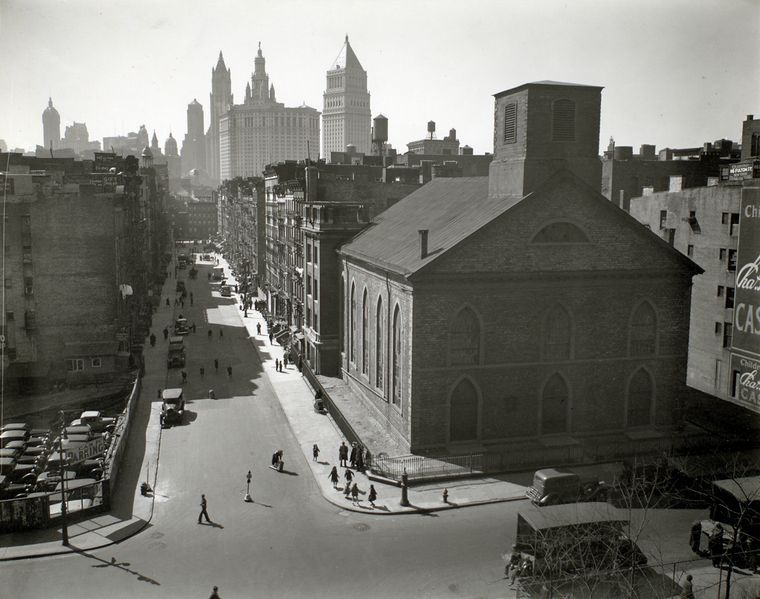
“General view, looking southwest to Manhattan from Manhattan Bridge, Manhattan” by Abbott, Berenice (1898-1991) is licensed under CC0 1.0
“As he stood on the waterfront on May 11, 1647, watching a skiff approach from four newly arrived ships at anchor the strain and darkness had to show in his eyes and face his breath must have fairly stunk with it. It was a cerulean spring day, and, like characters at the end of an act of a play, all the residents of the community were gathered alongside him, headliners and minor players alike: Joris Rapalje and Catalina Trico, along with their children and grandchildren: Anthony “The Turk” van Salee and his wife Griet Reyniers-both respectable now, but still cantankerous-and their four daughters: Anna van Angola, a widowed African woman who had just received a patent for a farm on Manhattan, as well as Antony Congo, Jan Negro, and other black residents, slaves and free assorted Danes, Bavarians, and Italians, and a handful of area Indians: Cornelis Swits, son of the murdered Claes Swits; the English refugee leaders Lady Deborah Moody and the Rev. Francis Doughty: Everardus Bogardus, the beer-swilling minister who had assisted the colonists’ effort against Kieft by excoriating him from the pulpit: the activists Kuyter and Melyn: the company henchman, Cornelis van Tienhoven, who had slaughtered and tortured Indians while in Kieft’s service and was hoping to be kept on in the new administration. And there, too, on the cobbled quayside stood Adriaen van der Donck and his English wife Mary-it is from Van der Donck that we have one of the extant descriptions of this scene. The mood was festive. Shouts went up: celebratory cannon blasts were fired. The day of deliverance had come.
Then, slowly, like gray rain, the silence fell upon them. From a distance they would have seen first the hardness and smallness of the eyes, like sharp pebbles set in the broad plate of the face. Then the flash of the sun on his breastplate must have caught their attention, and the sword at his waist: the efficient, meticulous, militaristic parcel of him. Finally they would have watched him unpacking himself from the boat, and noted at once, as people do such irregularities, that curious movement of his, an unnatural stiffness, and no accompanying grimace or flinch, as if in defiance of pain itself. And all eyes then naturally moving down, and seeing it, the leg that wasn’t there.”
—Russell Shorto, The Island at the Center of the World
